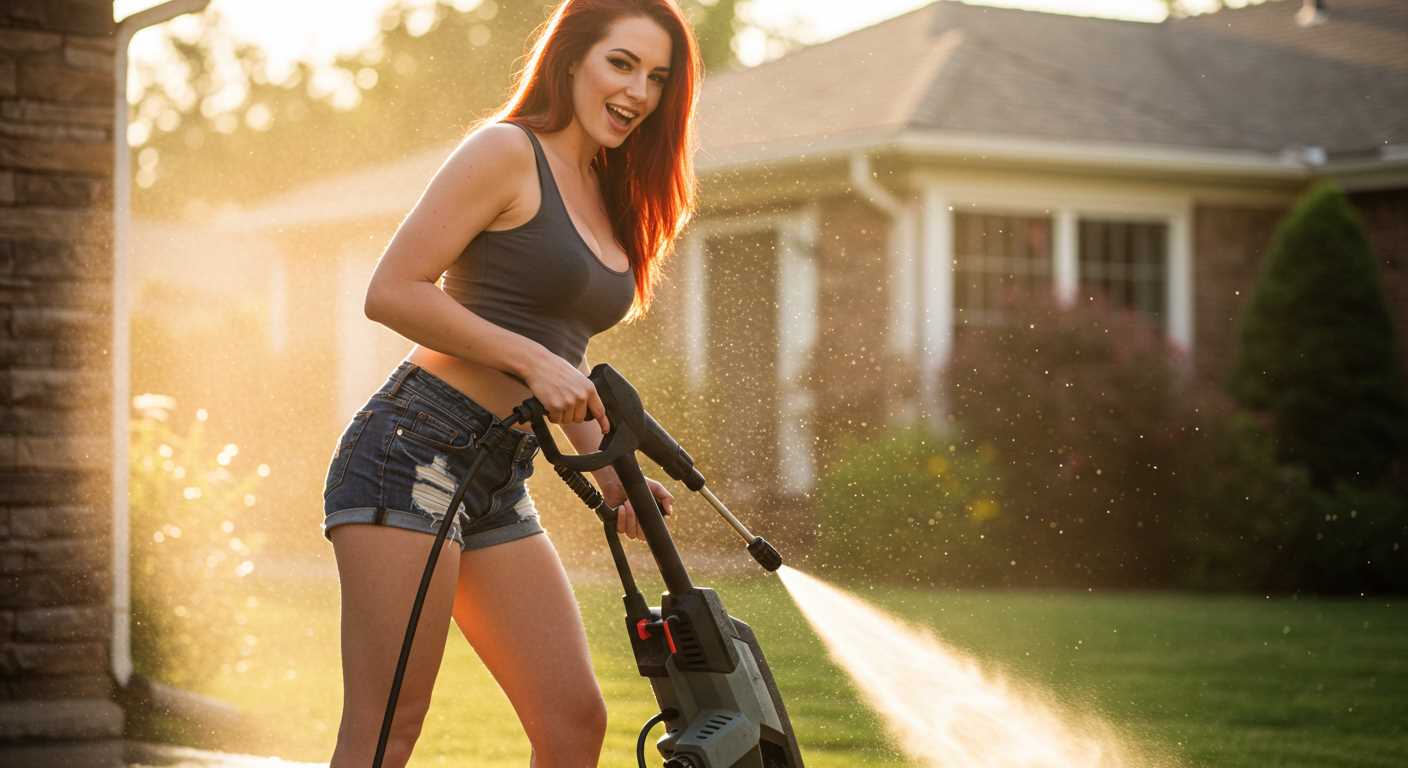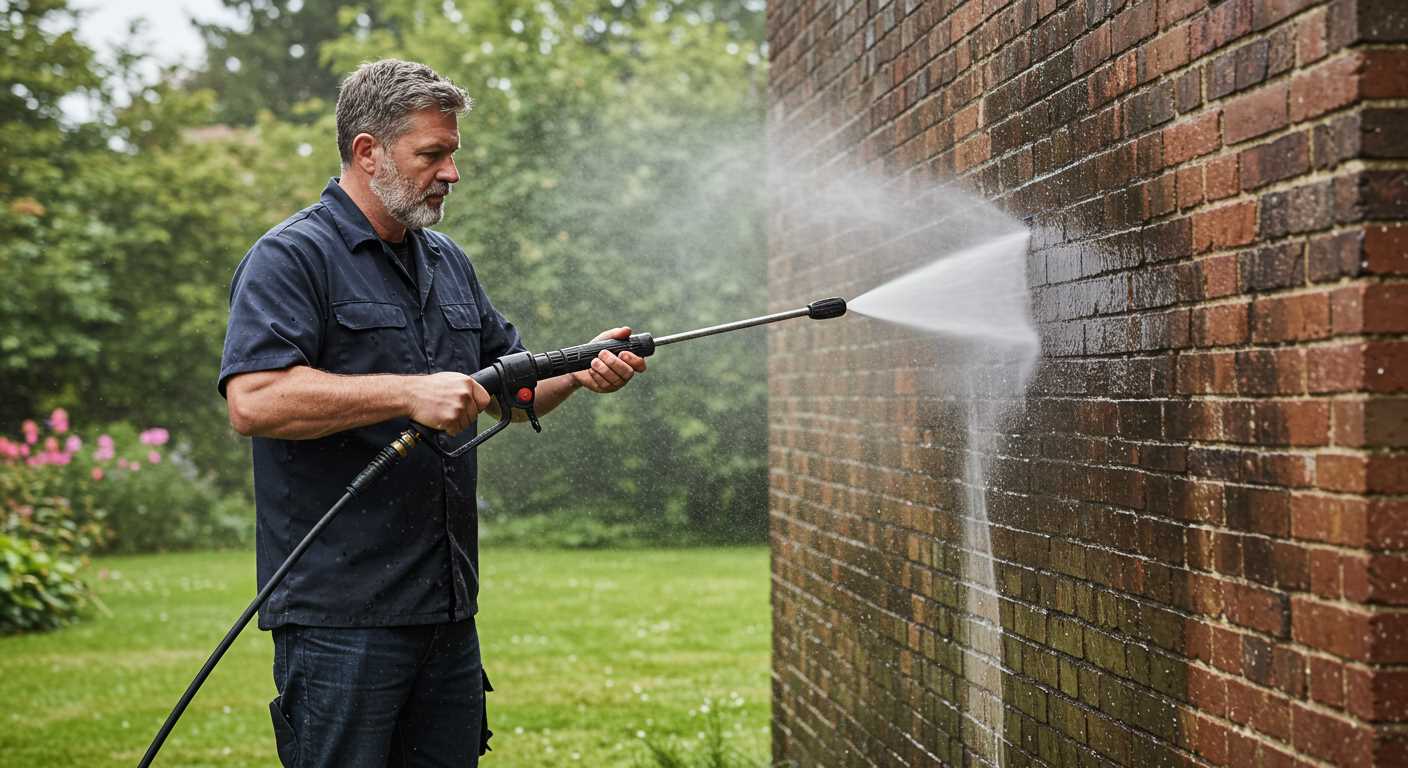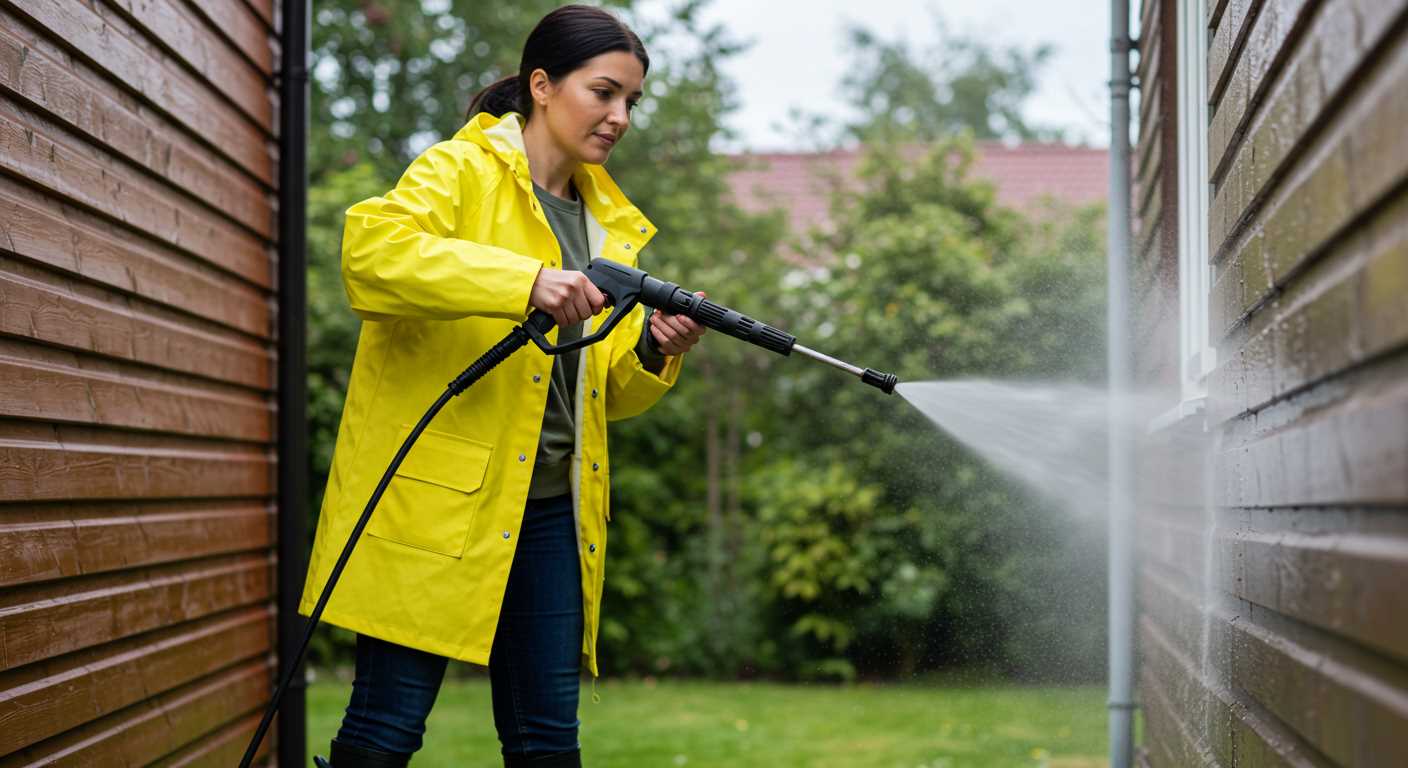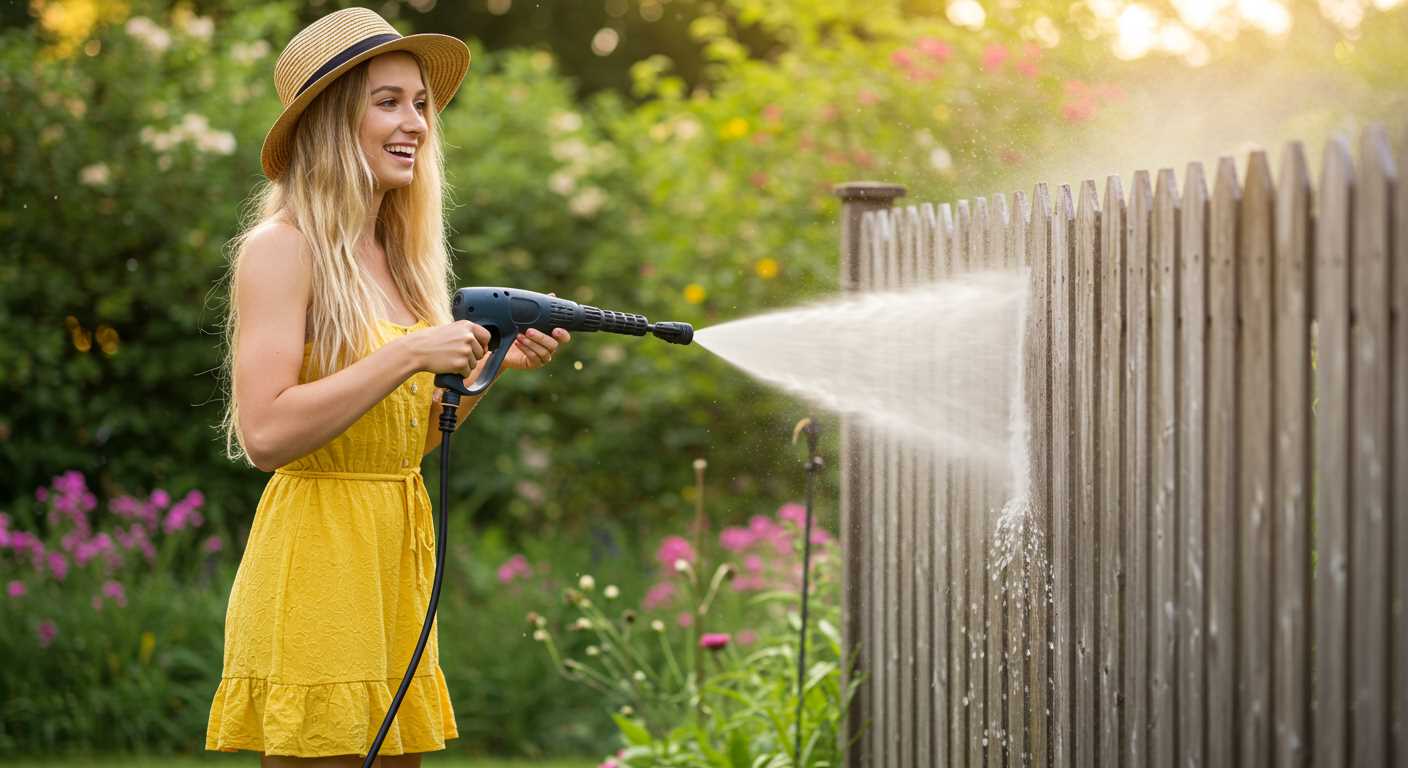

Before the frost sets in, ensure that your cleaning unit is thoroughly prepared to withstand the freezing temperatures. First, detach the water supply, ensuring that no moisture remains in the hoses, connections, or the machine itself. This step is critical to prevent any components from cracking or becoming compromised.
Next, drain the reservoir and run the equipment briefly to expel any residual fluid. It’s advisable to utilize a specialized antifreeze solution, suitable for your specific model, to safeguard the internal mechanisms. Pour the solution into the intake after confirming it’s compatible, and operate the machine for a few minutes to circulate the antifreeze. This action will protect delicate parts from the damaging effects of low temperatures.
Lastly, store the unit in a sheltered area, away from direct exposure to cold and moisture. A garage or a basement is ideal. If indoor storage isn’t feasible, consider insulating the machine against extreme weather conditions with a protective cover. This preventative action will ultimately extend the lifespan of your valuable equipment.
Procedures for Preparing Your Cleaning Tool for Cold Months
First, ensure the unit is completely drained of any liquid. Disconnect the water supply, then turn the machine on for a few moments to purge residual water from the system. Follow this with a fresh water rinse if necessary, to eliminate any soap or detergent remnants.
Next, examine all hoses and attachments for potential damage or wear. It’s wise to replace any hoses that show signs of cracking or blistering to avoid leaks during use in the warmer months.
Fluid Treatment
Introduce a non-toxic antifreeze solution through the soap intake or directly into the nozzle, depending on the specific model. This procedure will protect seals and internal components from freezing temperatures. Make sure to follow the manufacturer’s guidelines for the type and amount of fluid to use.
Storage Recommendations
Store the equipment in a sheltered, dry location away from extreme temperatures. A garage or shed with proper insulation can prevent ice formation inside components. Consider placing the unit on a raised platform or shelf to avoid exposure to potential flooding or moisture.
| Task | Description |
|---|---|
| Drain Water | Remove all liquid from the system by running the unit briefly after disconnecting the water source. |
| Check Hoses | Inspect for wear or damage and replace as needed to prevent leaks. |
| Antifreeze Application | Use a non-toxic antifreeze solution to protect internal components. |
| Proper Storage | Keep in an insulated area to prevent freezing and damage. |
Understand the Importance of Winterizing
Taking steps to prepare your cleaning device for colder months is not just a precaution; it can save you significant costs and ensure optimal functionality throughout the year. Water left inside the machine can freeze, expand, and potentially crack key components like hoses, pumps, and seals. Such damage may lead to costly repairs or the need for a complete replacement.
Also, residual detergent can corrode internal parts if not properly flushed out, shortening the lifespan of the appliance. Regular maintenance and the right procedures to prep your unit are crucial, especially if you want to avoid breakdowns during peak cleaning seasons. A little effort in the colder months will ensure your device is ready to perform at its best when needed.
Finally, following the correct steps to prepare your machine can enhance its overall reliability. Be proactive to avoid interruptions in performance when you resume use. Keeping your equipment in peak condition not only makes your cleaning tasks easier but also extends the life of your investment.
Gather Necessary Supplies for Winterization
To prepare your cleaning machine for the colder months, you need to assemble a specific set of items for optimal maintenance. Here’s what you should have on hand:
- Antifreeze: Non-toxic antifreeze is crucial to protect internal components from freezing. Look for a product specifically designed for this type of equipment.
- Wrench Set: A collection of wrenches will aid in removing hoses or fittings if necessary during the maintenance process.
- Hose Storage: Having a suitable storage solution for hoses prevents kinks and damage over the winter period.
- Bucket: A clean bucket is handy for mixing antifreeze with water if required.
- Protective Cover: An appropriate cover shields the equipment from dust and moisture, extending its lifespan.
- Cleaning Tools: Brushes or cloths are useful to clean surfaces thoroughly before storage to prevent corrosion.
- Owner’s Manual: Keep the manual easily accessible for reference on specific procedures and recommendations from the manufacturer.
With these supplies ready, you’ll ensure your cleaning device remains in peak condition for the next season of use.
Drain the Water from the Equipment
To prepare your cleaning device for the colder months, it’s crucial to eliminate any remaining liquid. Begin by disconnecting the garden hose from the inlet. This prevents any back pressure while draining. Position the appliance over a suitable area that won’t be damaged by water.
Release the Pressure
Activate the trigger on the lance to release trapped pressure. Hold it until no more water sprays out. This step is key to ensure there’s no remaining pressure in the system, which could lead to leaks or damage during freezing temperatures.
Drain Remaining Water

With the trigger still pulled, tilt the unit in various directions to allow all residual water to evacuate from the internal components. Gently tap the frame to encourage stubborn droplets to exit. Pay special attention to the pump and hoses, as these areas can hold hidden moisture.
Finally, let everything sit for a few minutes to guarantee complete drainage. This simple process is vital in preventing freeze-related damage, which can be costly and complicated to repair. After this, you can move on to the next steps in your preparation.
Use Pump Saver Oil to Protect the Pump
Applying pump saver oil is a critical step for safeguarding the internal components of your cleaning unit during colder months. This specially formulated lubricant prevents water from freezing within the pump, thereby avoiding potential damage from ice expansion.
Before introducing the oil, ensure that all water has been properly drained from the system. Following this, refer to the manufacturer’s instructions for the exact amount of pump saver oil required. Typically, it involves filling the pump through the inlet port until it reaches the recommended level.
After loading the lubricant, activate the motor for approximately 30 seconds. This allows the oil to circulate throughout the internal mechanisms, coating surfaces that might usually come into contact with moisture. This step is essential for providing an additional barrier against corrosion and wear over time.
Investing in high-quality pump saver oil can greatly extend the lifespan of your equipment, ensuring that it performs optimally when you need it again. Always store the cleaning machine in a dry place to complement the preventative measures taken with the oil.
Inspect and Clean the Hose and Nozzles
Begin with a thorough examination of the hose and nozzles for signs of wear, cracks, or leaks. Any damage can lead to reduced performance or further complications down the line. Replace any compromised components to ensure optimal functionality.
For cleaning, detach the hose from the unit and flush it with water. This will help eliminate any debris or buildup that could obstruct water flow. Use a soft brush to scrub the interior and exterior surfaces, focusing on connections where residue may accumulate.
The nozzles require special attention. Rinse them under warm water to dissolve any remnants. For stubborn blockages, a pin or needle can be used to clear out the tiny orifices. Ensure each nozzle is properly aligned and free from any clogs, which can hinder their spray pattern.
After cleaning, allow both the hose and nozzles to dry completely before storing them away. This step prevents mould and mildew growth, prolonging the lifespan of these components. Proper maintenance of the hoses and nozzles enhances the effectiveness of your cleaning tasks in the seasons to come.
Store the Pressure Cleaner in a Suitable Location
Choose a dry, unheated area to keep your cleaner. A basement or garage works well, but avoid spaces subject to extreme temperatures. Storing the equipment in a stable environment extends its lifespan and prevents damage.
Protect from Humidity
Humidity can lead to rust and corrosion. Ensure that the storage location is well-ventilated. If necessary, add a dehumidifier to maintain a stable moisture level, especially in damp areas.
Maintain Cleanliness

Before storing, clear any dirt or debris from the device. Use a soft cloth or brush to remove residue. A clean appliance is less likely to attract pests or develop mould during storage.
- Check for leaks or damage that may worsen while stored.
- Keep the cord coiled and secured to avoid tangles.
- Place the unit on a shelf or surface to prevent contact with the ground, especially in areas prone to flooding.
By taking these steps, you’ll ensure that your equipment remains in good condition and ready for action when the cleaning season resumes.
Check the Power Cord and Connections Before Next Use

Inspecting the power cord is paramount. Look for any signs of wear, fraying, or damage. If you notice any defects, replace the cord immediately to avoid electrical hazards during operation. Make sure the plug is clean and free of debris, as dirt can cause poor connections or electrical shorts.
Test Connections

Examine all connections for tightness and integrity. Loose connections can lead to inefficient operation or complete failure of the unit. Unplug the device and check if all connectors, including those to the spray gun and nozzle, are secure and undamaged. Clean any dirt or grime that may hinder performance.
Store Safely
When storing, ensure the power cord is neatly coiled and secured to prevent kinks and damage. Avoid placing heavy objects on the cord or connections, as pressure can lead to wear over time. Proper storage protects your equipment and ensures it’s ready for the next use.







